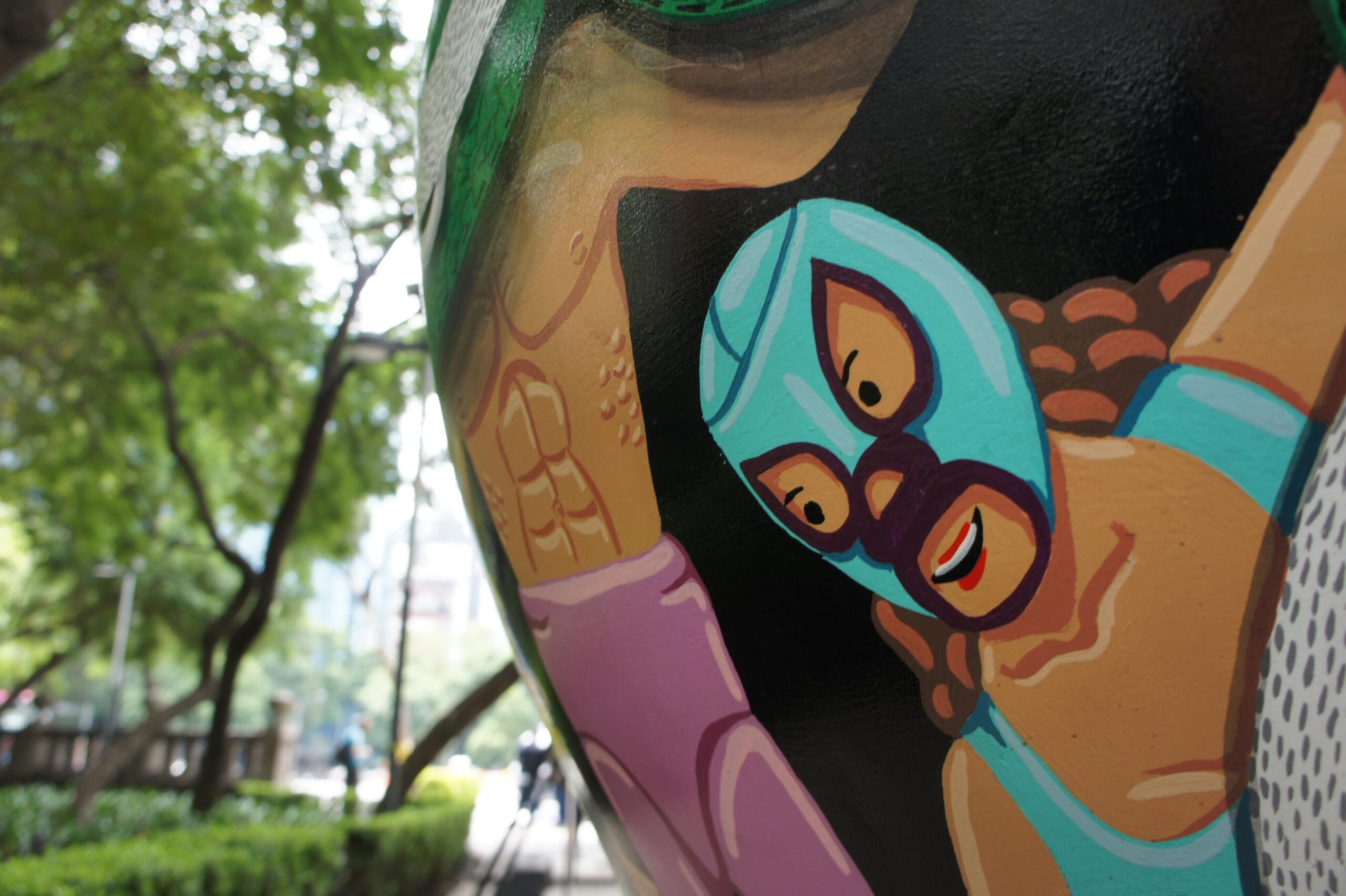The man behind every luchador’s mask.
Arena Mexico is packed, and it’s only Tuesday. Multicolored spotlights shine on the ring, throwing shifting colors across the canvas. Otherwise the cavernous venue is largely dark, and it’s hard to say how many more rows of spectators there are behind you—except when a roar of cheering (or heckling) erupts, and the escalating decibel levels hints at just how many humans have crowded into this historic venue. Built in 1956, the arena is also called the “cathedral of lucha libre.” Later I find out the space can fit 16,500 spectators, and that it regularly fills up for lucha shows that can happen up to three times a week. I wonder if the local churches are jealous. Lucha libre, or “free form wrestling,” is Mexico’s national pastime. The spectator sport is a heady combination of fluorescent spandex costuming, aerial kicks and body slams. At the sweaty heart of lucha libre is the wrestler’s mask. These snug-fitting mascaras hint at whether the luchador is an honorable technico (“technical fighter”) or a rule skirting rudo.

Rich in symbolism, the mask is the wrestler’s most precious asset. The fights with the highest stakes are where the loser is unmasked, essentially disgracing and killing off the character. At the arena, the audience is most vocal when one of the wrestlers is nearly de-masked. Even though the character had elicited an equal mix of cheers and boos, the crowd is unequivocal that he shouldn’t be unmasked—as if losing a lucha character were the worst outcome of a show. Antonio H. Martinez, the man who created the first lucha libre mask, is not well known, even in his native Mexico. His grandson Mauricio admits, “We don’t get a lot of local visitors, it’s mostly foreign fans who come see our shop.” Through their website, they also occasionally receive orders for masks from Mexicans living abroad. And while thousands of spectators stream into Arena Mexico several nights of the week to catch a lucha libre show, the modest storefront of Desportes Martinez remains largely quiet, despite being only a couple blocks away. For being such an integral part of a flamboyant sport, the store is straightforward, minimalist. Opposite the entrance is a long white counter; the walls are lined with glass casing that houses masks mounted on Styrofoam heads. In the streets surrounding the Arena, colorful posters plaster any available building exterior; wrestlers glare from behind their masks and promise an unforgettable show. Antonio Martinez was first drawn to lucha libre by such posters, when lucha was just emerging. The spectacle was totally different from any entertainment he had known before—mostly because there were no horses. Growing up in Léon, rodeos were the thing. Roping cattle flourished in the city when it emerged as the national heart of the ranching industry. Léon was (and is) famous for its leather goods, so when the young Antonio relocated to Mexico City as a leather craftsman, his credentials had cache. Antonio became a regular at the lucha shows, which were drawing crowds in increasing numbers. He befriended several luchadores, who in turn sought Antonio for his leather craftsman skills. One day, a wrestler named Cyclone Mackey approached Antonio about creating a mask he could wear during matches.
Recommended Fodor’s Video

The first lucha mask was “a spectacular failure,” according to Antionio’s grandson Mauricio. Cyclone was so disappointed with the result—plain looking and ill-fitting—that he threw his payment on the ground and stormed out. Although it wasn’t what Cyclone imagined, he later found it was the best that any craftsman could do; he would go on to work with Antonio to perfect it. The Martinez family has safeguarded this original mask to this day, taking it out of the back room if a curious visitor inquires. The mask is flat, papery, and has no luster. It is hard to imagine it as a suitable piece of athletic wear. Making a mask that fit to all the unique contours of an individual’s face, while remaining flexible and breathable enough for high-intensity sport proved to be a challenge that would take decades to master. Antonio would spend his life in pursuit of the perfect mask.

Now a third-generation family business, the artisanal tradition of custom designed masks lives on at Desportes Martinez, as it continues to serve Mexico City’s vibrant community.



